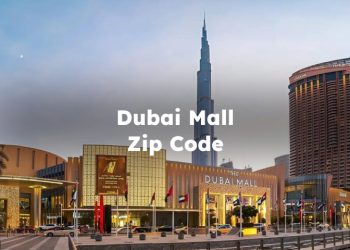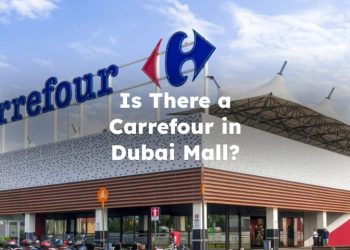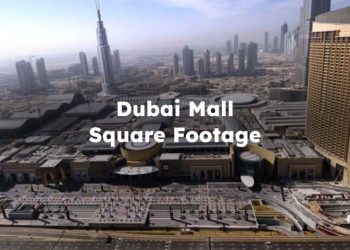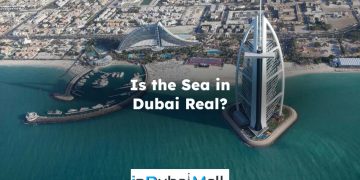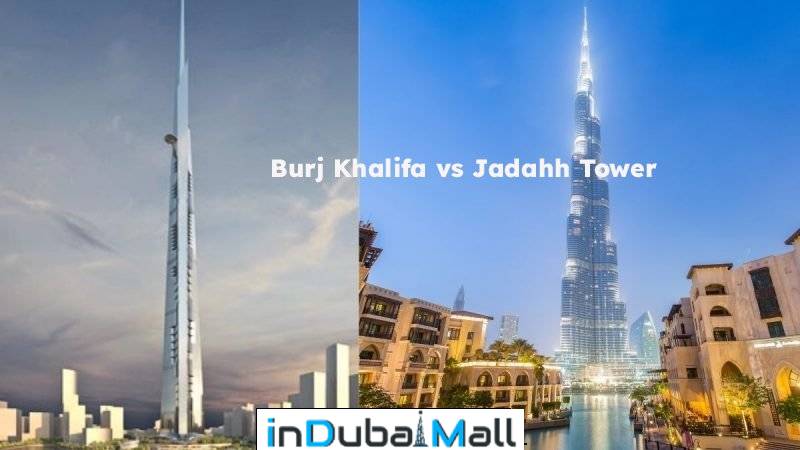
Nearly every nation globally features skyscrapers; however, they lack the tallest ones such as Jeddah Tower and Burj Khalifa. Only one nation currently holds the title for the tallest building in the world, while another is working to surpass this record. These nations are the United Arab Emirates and Saudi Arabia. The United Arab Emirates boasts the tallest building, Burj Khalifa, while Saudi Arabia is actively pursuing the completion of Jeddah Tower. Let’s explore some of the differences of Burj Khalifa vs Jeddah Tower in this blog on Indubaimall in order to see how they compare.
Height and floor count comparison
Jeddah Tower is more than 170 meters taller than Burj Khalifa. Burj Khalifa vs jeddah tower height stands at 828 meters, while Jeddah Tower is projected to reach 1 kilometer. At present, Burj Khalifa holds the title of the world’s tallest building, but once Jeddah Tower is finished, it will take that title away from Burj Khalifa.
The Burj Khalifa vs Jeddah Tower features 163 cozy floors along with additional mechanical levels that house residential studios, apartments, and suites. It also includes an observation deck, a restaurant, and many other amenities. Whereas, Jeddah Tower is expected to have 167 floors, featuring more advanced and comfortable mechanics. It will cover an area of 530,000 square meters and will include a mix of residential, commercial, and recreational spaces.
Observation decks and vantage points
The Burj Khalifa in Dubai offers visitors multiple observation decks, that are notably on the 124th, 125th, and 148th floors. Its “At The Top SKY” deck at 555 meters provides 360-degree panoramic views of the city, desert, and Persian Gulf, enhanced by telescopes and interactive displays. Its tiered design allows unobstructed vistas and dramatic skyline perspectives, especially at night. In contrast, Jeddah Tower in Saudi Arabia, set to exceed 1,000 meters, will feature an observation deck above 600 meters, while it is offering unprecedented aerial views of the Red Sea and Jeddah’s coastal cityscape. As far as Burj Khalifa currently provides a fully immersive visitor experience, Jeddah Tower promises record-breaking heights and a sense of hovering above the region. Both towers showcase human ambition in skyscraper engineering, while Burj Khalifa excelling in accessibility and immersive experience, and Jeddah Tower aiming to redefine vertical vantage points with extreme altitude and panoramic expansiveness.
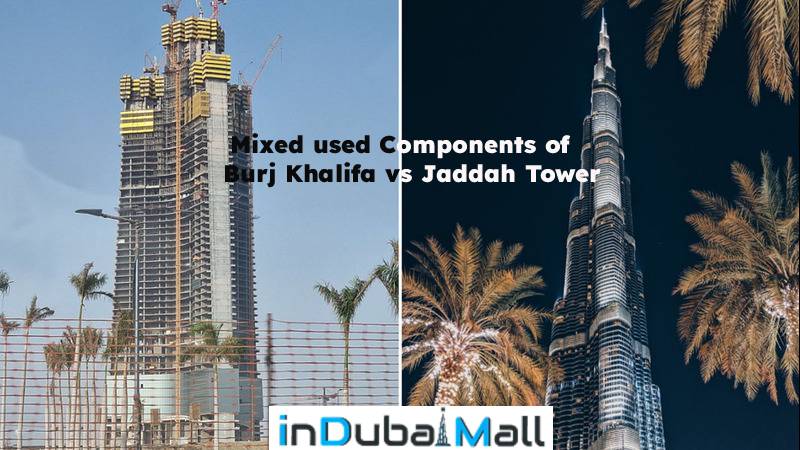
Mixed-use components: Hotels, residences, commercial spaces
The Burj Khalifa in Dubai is a great example of a mixed-use skyscraper, while it is blending hotels, residences, and commercial areas. It features the luxurious Armani Hotel spread over 15 floors, providing elegant suites and tailored services. The tower also has upscale residential apartments that includes breathtaking views of the city and desert, as well as corporate offices and high-end commercial spaces. Restaurants, shops, and observation decks add to Burj Khalifa multifunctional design, while it is creating a lively vertical community. By merging living, working, and leisure in one building, Burj Khalifa vs Jeddah Tower shows how supertall structures can serve as self-sufficient urban ecosystems, while they are delivering convenience, luxury, and remarkable architectural experiences.
Jeddah Tower in Saudi Arabia is designed as a groundbreaking mixed-use skyscraper, because it will be combining luxury residences, a hotel, office spaces, and entertainment facilities. While it is still under construction, plans indicate that the tower will have high-end apartments with panoramic views of the Red Sea, that are alongside a world-class hotel and it is offering premium hospitality experiences. Its commercial and office floors aim to create a vertical business hub, while retail and leisure areas will serve both residents and visitors. Jeddah Tower’s mixed-use design emphasizes vertical integration, and it is offering an unprecedented combination of living, working, and recreational spaces at extreme height, while it will be redefining urban skyscraper functionality.
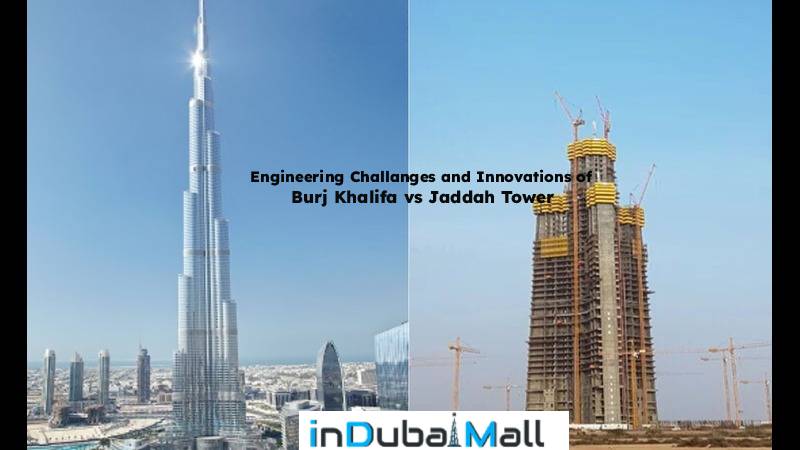

Engineering challenges and innovations
The construction of the Burj Khalifa vs Jeddah Tower faced significant engineering challenges because of its remarkable height of 828 meters. Major concerns included wind loads, structural stability, and material strength. To counter lateral forces and improve stability, engineers implemented a Y-shaped, buttressed core design. They used high-performance concrete, which was pumped to unprecedented heights, in order to guarantee strength and durability. Innovative construction sequencing and advanced wind tunnel testing were employed for increasing efficiency and safety of Burj Khalifa. The cladding system of the tower was specifically designed to endure the extreme heat of Dubai. Through these advancements, the Burj Khalifa emerged as a symbol of modern engineering excellence, while it is pushing the boundaries of architecture, materials science, and vertical construction technology.
The construction of the Jeddah Tower illustrates the difficulties of building a “kilometer-high” skyscraper while tackling unique engineering challenges. A variety of factors have influenced the development and solutions of the project. To construct over 1,000 meters, it is essential to surmount considerable atmospheric and structural challenges. Wind resistance posed significant concerns regarding structural integrity, which were mitigated through the tower’s tapered shape and aerodynamic triangular design. Sophisticated engineering techniques, that are including the Y-shaped core and high-strength reinforced concrete, were employed to manage stress distribution. Furthermore, sourcing environmentally sustainable materials and integrating energy-efficient systems presented logistical difficulties, further complicated by the tower’s immense size. These challenges highlight the innovative strategies and meticulous planning required to set new benchmarks in skyscraper design and construction.








